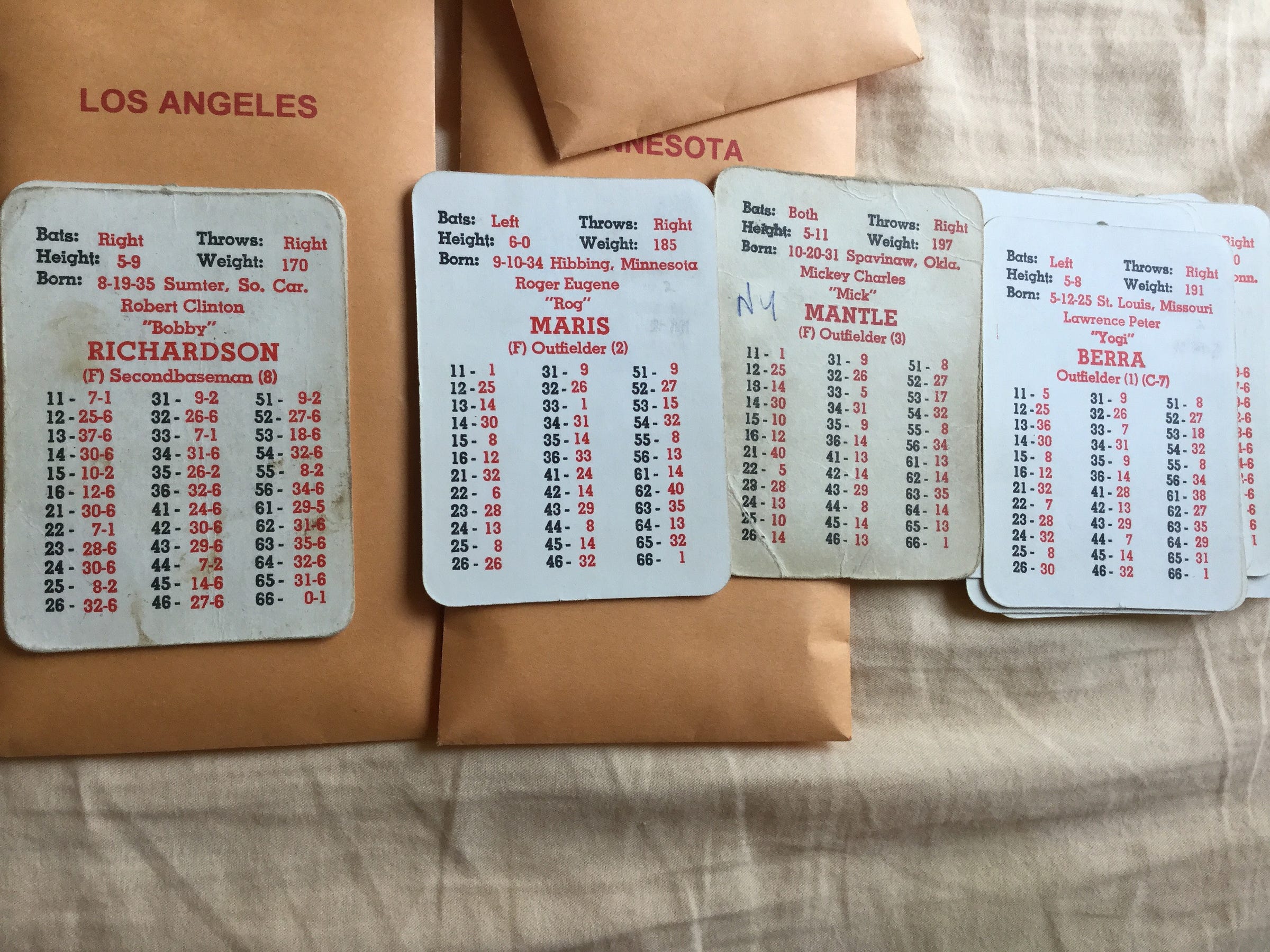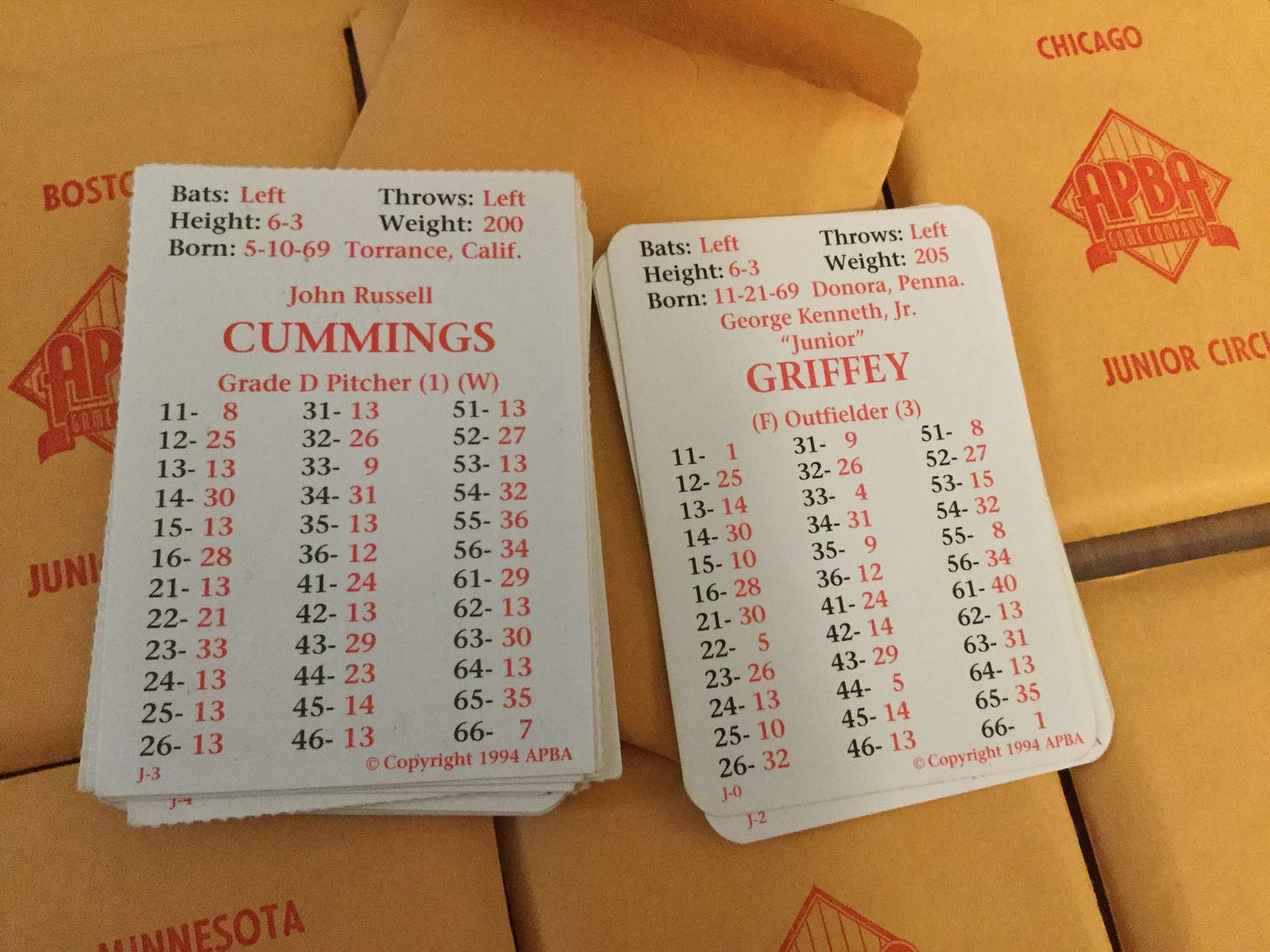A Brief Guide to APBA Set Rarities
Though the APBA baseball secondary market has certainly seen better days, there are certain sets that will likely retain value in the future no matter what.
Even as the company has survived through multiple bankruptcies and the onslaught of competitors, the market for some of these old cards remains strong.
APBA card collecting is a daunting process, especially if you’re not particularly familiar with the game and its history. While most message boards will point you to helpful resources, such as the play result 12 locator for identifying seasons and the Zack Handbook for identifying printing variations and other fun things, there actually isn’t much information out there about season scarcity and demand.
It’s also hard to come up with an APBA card price guide, since each set is different. As is the case with Strat-O-Matic, clean sets tend to be worth more than heavily used sets — but even this is not a guarantee.
Here’s a very brief guide to APBA set scarcity, based chiefly on my personal experience buying and selling cards over the years.
1950-56: The Heavy Hitters
First off comes the single column sets. APBA cards originally followed the National Pastime tradition of offering one play result per dice roll, 36 in all. Starting in 1958, however, some APBA cards featured a second column of play result numbers.
The second column allowed greater statistical flexibility. However, the small print numbers of those single column sets generally increases their secondary market value.
We know that the original 1950 season cards, printed in 1951, were limited to less than 150 total sets. There might be 10 complete sets currently in existence, and I believe the big collectors in the community know where all 10 of those sets are. The sets are so scarce that it’s impossible to assign them a price tag.
The 1951 through 1956 seasons are also quite scarce, though print runs increased over time. APBA also issued a small number of single column only Great Teams of the Past in the 1950s, which tend to go for over $100 each when they show up.

1957: The Exception
The 1957 season was also a single column only printing. However, the print run appears to have dramatically increased starting this year.
Don’t be surprised if you see an original 1957 season go on eBay for less than $1,000. There are more of these sets floating around than you think.

The key here is that the print run tends to determine the secondary market price, not just the fact that the cards contain only one column.
1958-69: Nostalgia
There are two general things to keep in mind when you’re looking at APBA sets originally printed in the 1960s.
The first is the existence of extra players, commonly referred to as “XB”s. XBs started with the 1964 season, and were originally printed in black and white, if memory serves well. I believe that the poor printing quality of XBs lasted for a few years.

The other thing to watch out for is the original 1961 season set. For years this set commanded a high secondary market price, primarily because of Roger Maris’ famous card:
Though it’s come down in price over the years, the original 1961 season still does command a bit of a premium.
The Common Era
Any APBA set printed between 1970 (perhaps even a few years before that) and 1993 is common. This includes original printings and most past season sets.
In fact, many of these sets were still in print and available new from APBA when I was in high school. For example, this page comes from APBA’s Winter 1995-96 catalog:
That’s right: every original season between 1979 and 1992 was still available new from the company.
I purchased original, brand-new copies of the 1979, 1982, 1984, 1985, and 1986 seasons around 1999 or 2000 for something like $7 each. While prices have gone up a bit since those days, keep this in mind when dealing with the secondary market. There are a lot more sets from those years out there than you think.
The Bankruptcy Years
And then we get to the tough sets.
For years, the 1994, 1995 and 1996 seasons in particular were difficult to come by. I can remember 1994 sets going for over $100 on eBay 15 to 20 years ago.
APBA’s 1993 through 1997 seasons were short printed, as were all specialty sets issued during those years. The 1994 season was particularly unpopular due to the impact of the strike on everything baseball related.
Prices for these seasons have actually gone down in recent years. APBA currently offers every season in the entire 20th century on a print-to-order basis, which has helped fill the demand for these seasons.
In the future, however, we’re likely to see the value of APBA sets printed in these years rise.
In particular, APBA’s 1928 season, which was printed in 1995, commands a pretty high secondary price. There was a famous auction years ago in which that season sold for over $800. Prices have come down, but the set is still quite scarce.
Other scarce sets from this era include the OFAS 2 and OFAS 3 sets, the original printing of the Negro Leagues set, the 1943 set, the reprinted 1972 and 1973 sets, and so on.
Modern Sets
And then you get to everything from about 1998 to the present.
There’s not much demand for more recent sets — largely because they’re still available new from the company.
It’s not clear what will happen in the future, however. If APBA were to go away from print to demand and towards Strat-O-Matic’s more limited model, you might see some of those sets rise in price.
The big unknown in all of this, of course, is player and collector demand. APBA’s player base is aging, and young people interested in the game are few and far between. I believe that these cards will retain some value as collectors items in the long run. However, we might be in for some lean years in the next decade or two.







The Heart of America Baseball league was formed in Kansas City in the late 1980's. Six managers drafted teams to play an 81 game season over the course of 7 summer months. Over the winter a one day draft allowed you to improve your team by drafting from still available MLB player pool or college prospects. After season one we notice how frayed and rag torn our
APBA cards had become by so much handling. The six managers shared the cost of buying a full set of trading cards, dry mounting them back to back to the APBA card and laminating each card. We chose Score because every card was an action photo
Sure wish I still had that 1957 set handed down to me by my brother, I probably started playing with it when I was about 10 yo and couldn’t figure out why I had not ever heard of such a great player as Hurricane Hazle. I later added sets from ‘67 and ‘68 and spent countless hours replaying and keeping the stats for those seasons of my Detroit Tigers.